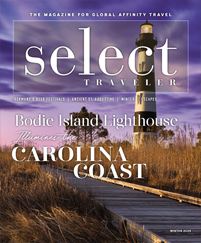Milwaukee, Wisconsin
Milwaukee’s beer barons made their mark in more ways than enduring brands such as Pabst, Schlitz and the Miller Brewing Company. Their elegant homes are still standing, but the Pabst Mansion is the only one open for tours and groups.
“Pabst Mansion is really a jewel here in Milwaukee,” said Margaret Casey, communications coordinator for Visit Milwaukee.
Captain Frederick Pabst built the Flemish Renaissance Revival mansion in the early 1890s, and the Archdiocese of Milwaukee bought the property in 1908. A historic preservation group bought it in 1978 and has been diligent in restoring the property and tracking down original family furnishings and artwork, Casey said. The mansion is hugely popular for groups, many of which like to pair a mansion tour with stops at Best Place at the Historic Pabst Brewery or the new Brewhouse Inn and Suites, a boutique hotel in one of the former brewery’s restored main buildings.
Villa Terrace and Charles Allis are two historic mansions-turned-art museums half a mile apart on the shores of Lake Michigan. Villa Terrace Decorative Arts Museum is a 1924 Italian-style manor with lush gardens and “water stairs” cascading from the house down a hill to the shorefront below. Inside, visitors can explore expansive rooms and exhibits of furniture, artwork and decorative pieces. The Charles Allis Art Museum is a 1911 Tudor-style mansion that houses much of the home’s original furniture and an art collection that spans nearly 2,000 years.
Tulsa, Oklahoma
When oil was discovered near Tulsa, Oklahoma, in 1901, the city’s oil boom lasted the better part of the next 30 years. The Golden Age of oil saw the rise of oil barons as well as their opulent Gothic and Art Deco mansions.
The Philbrook Museum of Art is both a grand mansion and an art museum. In 1926, oil baron Waite Phillips built the 72-room Italian Renaissance home on 23 acres that included formal gardens cascading from the front of the house. Phillips donated the estate to the city in 1938 to be used for cultural purposes, and the art museum opened the following year. Visitors can tour the historic mansion and gardens, which remain largely intact as they were in the 1920s, as well as an addition that houses art exhibits, said Vanesa Masucci, vice president of the Tulsa Convention and Visitors Bureau. Guided group tours focus on the art collection, the gardens or the home’s history, and visitors can dine in La Villa restaurant, she said.
In 1919, brothers Dave and Sam Travis built sister mansions — designed by the same architect — next to each other. Today, the Sam Travis mansion houses the Tulsa Historical Society and Museum, and the Dave Travis mansion is the Tulsa Garden Center. The historical society offers guided tours of exhibits that feature a timeline of Tulsa, the history of the Sam Travis mansion and the 1921 Tulsa race riot. Groups can also tour the rose, azalea and herb gardens at the Tulsa Garden Center, as well as the arboretum and the conservatory.
Beverly Hills, California
Before Beverly Hills became known for Rodeo Drive, it was home to oil tycoons, business magnates and, eventually, movie stars.
Although Greystone Mansion is only about three miles north of Beverly Hills’ Golden Triangle, it’s a hidden gem that many people don’t know about, said Claire Delacruz Soe, communications manager for the Beverly Hills Conference and Visitors Bureau. Oil tycoon Edward Doheny completed the 55-room Tudor-style mansion in 1928. As a city-owned park, the 18-acre estate and gardens are free and open to the public, but the home is only open for special events or by appointment for group tours. Some rooms may seem familiar to visitors; the mansion has appeared in several movies, including “Ghostbusters,” “The Big Lebowski” and “There Will Be Blood” — the final, pivotal scene is set in Greystone’s bowling alley.
Virginia Robinson Gardens is a historic 1911 Beaux Arts-style mansion that was once home to Virginia and Harry Robinson of Robinson’s department stores. The six-acre property and its “beautiful, lush gardens” sit behind the Beverly Hills Hotel, Soe said, and the home, garden and pool pavilion are open to the public, including groups, by appointment.
Groups have another option to see the homes of some of Beverly Hills’ most famous residents. Beverly Hills Trolley Tours highlights the city’s major landmarks, including the houses of Charlie Chaplin, Fred Astaire, Clark Gable and Julie Andrews, during a 45-minute narrated driving tour. The city-run trolley operates public tours and is available for private charters.









